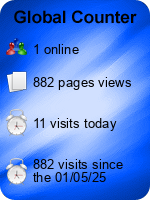New info on the Holocaust obtained from KGB archives
With Holocaust Memorial Day now taking place, Yad Vashem is now publishing new info:
Yad Vashem will publish on Thursday thousands of new documents gleaned from national and KGB archives from the former Soviet Union on this year’s Holocaust Remembrance Day.I'm very glad whenever historians' industry is able to publish more and more vital info on serious subjects like these.
The new archival material – totaling approximately one million new documents – is available following several international agreements made in the past four years with national archives and those with the KGB from the former USSR.
According to Dr. Haim Gertner, head of the archives department at Yad Vashem, researchers could not access much of the material due to political, financial and bureaucratic obstacles.
“The majority of European Jews lived in Eastern Europe before the war and the genocide was mostly committed there, so these documents are important to fill in the large gaps in our knowledge of what happened in these countries during the Holocaust,” Gertner told The Jerusalem Post on Tuesday.
Gertner pointed to several examples where large numbers of Jews from specific communities were murdered during World War II but for whom there was little documentary evidence until now.
Before the war, tens of thousands of Jews lived in Kovno, Lithuania – with the overwhelming majority killed during the Holocaust. Most victims’ names remain unknown as there was no holistic census conducted before the war.
The new archival material encompasses the passport records of the city’s Jews, including pictures, names of children and parents and their addresses. “This helps us draw a picture of Jewish life in the city and helps us document what was lost during those times,” Gertner said.
In Latvia, the Jewish community numbered 90,000, of which approximately 70,000 perished. Less than half of the former residents have been identified.
The new archival information has located tens of thousands of records from residential committees in Latvia’s capital, Riga, which helps researchers identify where Jews lived, specifically in the city’s ghetto.
The treasure trove of information, which was gleaned by several teams who scanned and copied records from archives across the former USSR, also includes new information on Nazi collaborators in Eastern Europe who helped round up and murder Jews during the war.
After the war, communist authorities investigated many cases and the official records drew a more complete picture as to the degree of local collaboration.
Not all of the documents have been examined, and the new material will be studied and published in several stages.
According to Yad Vashem, the examined documents clarify many details, some hitherto unknown, about the extent of the murder and genocide of Jews in the region, as well as daily Jewish life before the Holocaust in the former Soviet Union countries.
Masha Yonin, the director of the archival acquisition department at Yad Vashem, said that the information will help fill in the gaps in the institute’s database of victims, as well as track the fate of evacuees and survivors. Currently, 4.1 million Holocaust victims have been identified by name. The records gathered by Yad Vashem will help increase this number.
In Ukraine and Belarus, researchers have uncovered only one third of the victims’ identities.
The new agreements with the various archives was supported by the Genesis Foundation and the European Jewish Fund.
Update: and while we're on the subject, here's also some testimonial videos from survivors including Eliezer Lev-Zion, and Anatoly Rubin. And here's an article about a painting stolen by the Vichy that was returned to its rightful owners.
Labels: anti-semitism, Europe, germany, Israel, Russia








0 Comments:
Post a Comment
<< Home